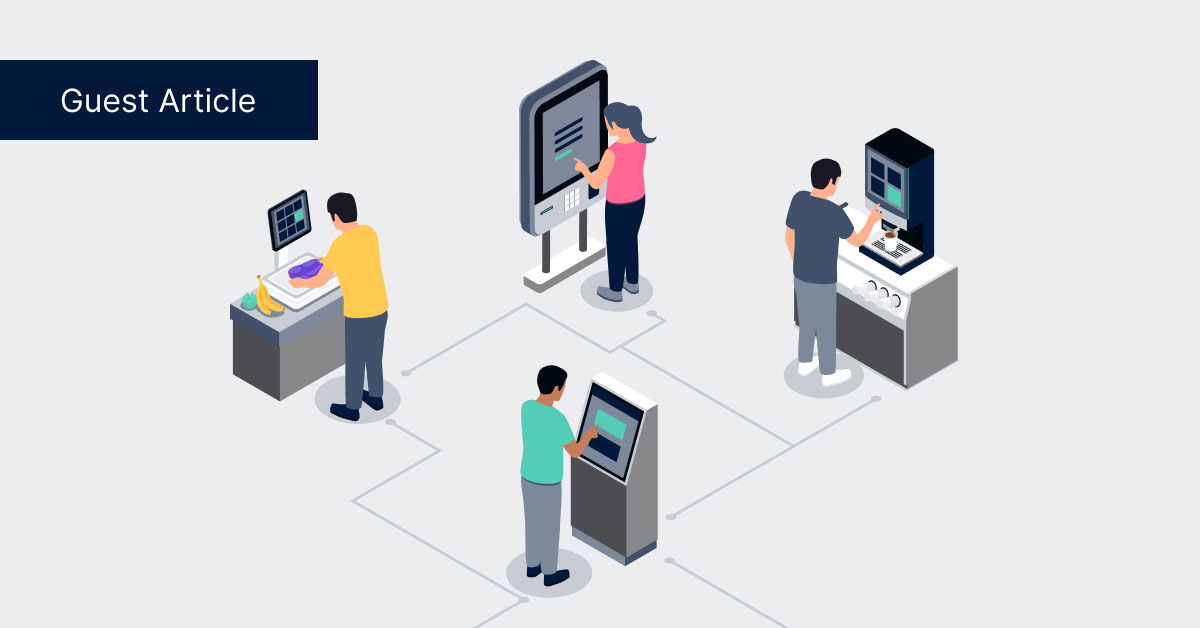
The value of customer self-service has been brought into the spotlight recently with the increasing demand for convenience, agility, and speed. 95% of companies have seen considerable growth in the number of customer requests for self-service options.
Why is self-service so crucial for customer experience? Why should you bother about it?
This blog post is a well-packed guidebook on self-service. Learn why it’s a backbone for your customer experience strategy, what self-services have a higher potential in gaining satisfied customers, and how to take a forward-looking approach to CX by optimizing your business with self-service. Enjoy the read.
Customer Self-Service: Why It Is Today’s Beacon in CX
What Is Customer Self-Service?
Customer self-service is an indispensable tool that empowers your customers to find answers, carry out tasks/actions, and solve their issues on their own.
It can be a user forum, question-answer portal, chatbot, or anything else that enables customers to address any specific matter themselves. For instance, Apple has recently created a Self Service Repair Store with repair manuals and the possibility to order the needed instruments and parts.
Advantages of Self-Led Experience
Customer-operated service management systems are highly beneficial for both your company and your customers.
You can reach efficiency in resource allocation, cut expenses on support services, and boost revenues due to upselling and cross-selling, among other benefits.
Since the new core strategy in marketing is customer-centricity, let’s dwell on the following valuable advantages of self-service for customers:
- Saved time
For example, 68% of consumers prefer using a chatbot because of the faster responses it provides. - Loyalty
Self-service influences the sense of loyalty, as stated by 59% of customers. - Empowerment and confidence
Customers feel empowered and confident when they troubleshoot problems and put two and two together without anyone else’s help. - Met expectations
88% of US consumers expect organizations to have an online self-service portal. - Convenience and increased satisfaction overall
Increasing customer satisfaction should be your top priority if you want to achieve success in business. That’s when self-services become handy, as they prevent the feelings of disappointment and annoyance that normally appear when customers have to wait for too long.
On top of that, such tools are highly convenient and available in real-time. What are those? See below.
Top 5 Customer Self-Service Examples to Enhance CX
Grab the list of the best self-services that will dominate the future of customer experience:
1. FAQ page and knowledge base
FAQs and knowledge bases are the most common examples of self-service in action. What’s the difference between the two?
- FAQ page
The Frequently Asked Questions page is a simplistic self-serve option that gives laconic answers (can be a couple of sentences only) to the most typical inquiries. In most cases, it’s rather aimed at potential customers who get their concerns addressed in the quickest and briefest way. - Knowledge base
The knowledge base is an extensive self-serve “library” or a hub that contains in-depth articles, documentation, and answers to all W-questions. It has longer info pages with every possible detail about your business and products. Knowledge bases may also include exhaustive how-to guides or video tutorials.
“Having both a FAQ page and a knowledge base is a win-win solution for both you and your customers,” emphasizes Anthony Martin, Founder and CEO of Choice Mutual.
“At the very start of ChoiceMutual, we had only the Frequently Asked Questions page. Later, we added a Glossary of Terms, Video Learning Center, and Quote calculator for price-related queries. All materials were adjusted in accordance with the demands and desires of our website users and collected in the Tools & Support category. Such a combination of self-service variants allowed us to increase the user satisfaction rate by 36%,” Anthony shares.
As many as 91% of customers confess they would gladly peer into the knowledge base, if it were available and tailored to their needs.
2. Automated help desk
By automating help desks, you can obtain immense self-service capabilities.
Zendesk, for example, one of the pioneers of customer service tools, offers an all-in-one help desk with a knowledge base, automated ticketing system, pre-written responses, and more solutions. It ensures fast quality support to meet customers’ expectations which is one of the factors that drive customer satisfaction.
You can also consider some other help desks that prioritize automation: Freshdesk, Grove, Salesforce Service Cloud, etc.
3. Interactive terminal or kiosk
As customers crave a more user-friendly, engaging, and convenient environment for interacting with brands, the interactive kiosk market has been on the rise. The forecast for it is a 5.56% CAGR surge during 2021–2026.
The following self-help technologies are sought after:
- Booking and ticketing kiosks
- QR code menus or digital menu boards
- Check in/out stations at hotels
- Do-it-yourself (DIY) checkouts, etc.
McDonalds’ was among the first ones to say goodbye to cashiers and welcome DIY kiosks instead. This decision not only brought monetary benefits but also changed the customer experience game for the brand by improving customer journey touchpoints with higher speed and accuracy in ordering, as well as a decrease in social pressure.
Perhaps that’s why 65% of diners would visit a restaurant more often if it had a self-service kiosk, whereas 79% of consumers plan to continue or increase their usage of self-checkouts post-pandemic.
According to Jim Pendergast, Senior Vice President of altLINE Sobanco, “Customer experiences have been majorly influenced by self-services in online banking as well. The brightest example is an assisted self-service terminal (ASST) that increases operational efficiency, boosts security of operations, and takes off the pressure of standing in queues.
In the age of social distancing, FinTech companies seek to combine the efficiency of self-servicing processes with a personal touch. That’s why they enable a virtual presence of an assistant whenever required – a customer calls for a teller, only if any assistance is needed.”
NCR, a software provider for digital banking, reported a month-to-month growth in the use of ASSTs from 11,000 to 17,000 transactions.
4. Chatbot
Intelligent chatbots help companies bring customer engagement to the next level. Actually, they drive over 80% of it.
Chatbots are widely applied as trendy solutions in retention marketing, as they provide convenience and leave customers satisfied with 24/7 availability, direct access, and faster replies. Not to mention that a chatbot alone can help reduce costs on customer support services by up to 30%.
The majority of virtual chatbots are messaging apps that are based on machine learning (ML) patterns and artificial intelligence (AI).
“If we talk about chatbots powered by conversational AI and natural language processing (NLP), the Google-Amazon-Apple trio has made self-service the new norm of today’s digital era with their Google Assistant, Alexa, and Siri, correspondingly,” Logan Mallory, VP of Motivosity.
“They have revolutionized the CX industry already and are now guiding businesses toward Conversational User Experience (CUX). It enables customers to have human-like conversational interactions with a chat or voice-based interface that mimics human language.
Conversational self-service over the phone is virtually a new go-to, as it helps solve customers’ problems without human intervention,” Logan notes.
To substantiate Jesse’s thought, here’s the last example that features one of the types of conversational self-service.
5. Interactive voice response (IVR)
An IVR is a speech recognition telephony system that identifies, segments, and redirects callers to a proper agent or finds the solution without the agent’s help. It wipes out waiting times for customers, eliminates disjointed conversations, and reduces the workload on support agents.
Amidst COVID-19, an interactive voice response system can be used as a beneficial tool for self-service in the healthcare industry: for getting information about symptoms, self-monitoring, or lab results tracking, in particular.
Remarkably, the global market of IVRs is predicted to reach $6.7 billion by 2026 with a CAGR rate of 7.9%.
How to Optimize Your Business with Customer Self-Service
As a matter of fact, 77% of web users believe that poor self-service is even worse than none of it at all. That’s why proper implementation of a self-service system is significant. The below tips are going to help you do it correctly:
- Put it on a visible place
Let it be noticeable and accessible. Place it in front of your customers’ eyes. - Take advantage of guided self-service
Explain how to use it before the interaction starts or guide the user throughout the way switching from a fully to partially (guided) self-led experience. Check how IKEA drives better customer experiences with guided self-service. - Build an escape route
Make it simple for users to end their self-servicing journey at any stage without having to click too many times. - Test, collect customer feedback, and improve
Is it easy for your customers to find all the necessary information on their own?
How do you know that without asking them?
Test your self-service solution and capture customer feedback. For example, you can use a post-checkout QR code for that. Feedback collection software and surveys can also help you measure the satisfaction rate and make the necessary improvements afterwards.
Stepping Into the Future With Customer Self-Service for Better Customer Experience
Without exaggeration, self-service can guarantee you perfect customer experiences literally on autopilot. Only in case you know how to implement it wisely.
Such self-serve variants as FAQ pages, knowledge bases, automated help desks, interactive kiosks, chatbots, and IVRs are the best on-demand tools that can help you cultivate customer loyalty and build more productive and efficient relationships with your audience.






